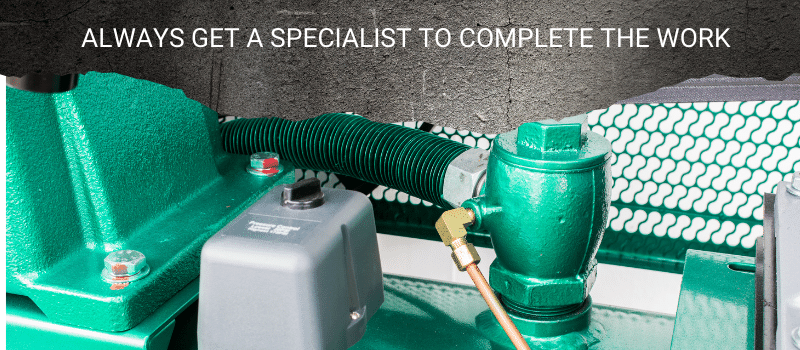Written by Industrial Stores Staff 08/17/2022
A pressure switch helps monitor the water or gas pressure in your home or business. It guides your pump on when to release and when to stop releasing water or gas. The pressure of the water or gas at the point your pump turns on or off is called the set point. For instance, most residential pressure switches have a set point of 30 to 50 PSI (pounds per square inch).
What this means is that when the water or gas in your system drops to 30 PSI, the switch is activated and allows more water or gas in. In this example, the switch deactivates at 50 PSI.
As it’s a critical system, it’s important to have a maintenance plan for your pressure switch. This could save you time and money in the long term because:
Today, we’ll provide you with maintenance tips for your pressure switch. We’re also going to explore different types of pressure switches and their preferred applications.
Whether or not you’re experiencing problems with your pressure switch, regular servicing is a must.
Regular servicing not only ensures that your pressure switch functions properly but also allows for a quick intervention to prevent health hazards and explosions.
Pro Tip: Understanding how a pressure switch works is useful for troubleshooting problems with your pressure switch.
This is because, although all pressure switches aren’t interchangeable, they are all composed of a sensing element and a snap action switch.
For example, in a home setting, a well pressure switch controls when to turn on and off your well pump, which supplies water to your home.
It accomplishes this by monitoring the pressure and increasing the flow of water when the pressure drops to the required PSI. When the maximum PSI is achieved, it switches off.
In a furnace, the pressure switch ensures there’s pressure for the furnace to function. It also shuts down the furnace if it senses negative pressure to prevent the furnace from cycling in case there’s a mechanical failure.
All pressure switches have an internal spring mechanism that's directly wired to electrical contacts. The spring may degrade and stop working as the pressure switch ages, at which point a replacement is required.
Regular servicing by an experienced professional will ensure the pressure switch is inspected for any impending breakdown or normal wear and tear.
Prior to analyzing your pressure switch, the professional will look out for common issues that affect pressure switches such as:
The maintenance technician will then give feedback on the best way forward.
During this time, recommendations may be made for the replacement of some parts to ensure that your pressure switch continues working smoothly.
A pressure switch requires regular and proper cleaning for it to function optimally and maintain stable pressure.
Residential, commercial, and industrial pressure switches need to be cleaned by professionals who are trained to handle this kind of machinery.
Working with any form of electrical equipment can be risky, but industrial facilities pose a higher risk due to the more complex equipment and higher electricity and power requirements.
Safety always comes first. So, get a specialist to complete the work, and turn off the pressure switch before beginning any type of maintenance.

Trying to clean the pressure switch yourself may be hazardous and you may even end up destroying parts that were working perfectly.
A professional, on the other hand, will know where to clean, and how to get the pressure switch functioning again.
Industrial facilities must ensure they select the type of pressure switches and cleaning schedule that are most appropriate for their facility. This will ensure smooth operations and prevent any future electric issues.
As a decision maker in charge of your equipment and its pressure switch, you must know what kind of faults are expected and how to troubleshoot them. This is because it's the only way to solve issues before they turn into hazards or breakdowns.
The following are examples of common issues with pressure switches and how you can prevent them:
Expert Tip: Many homeowners are unaware that the pressure tank switch needs periodic maintenance in order to keep functioning properly within the well pump system.
Because of this, the switch could wear down earlier than it should. You can test the pressure tank switch to see if the switch is the issue or if there is another obstruction stopping water from reaching your home's plumbing.
A pressure switch is activated by the pressure of a liquid or gas at the set points.
There are two main types of pressure switches:
A pressure switch can be used in a range of domestic and commercial applications. For example:
The table below shows the key components of a pressure switch.
“I just wanted to thank you for your extremely quick shipping. I will be a customer from now on!“
– Janet Wartschow, Connecticut
At Industrial Stores, we are committed to offering the best brands for parts of any of your work or home-related appliances.
Our efforts are geared towards offering not just the best brands, but brands that are easy to work with and relatable in a home or commercial facility setting.
To learn more about the products we have, visit our online shop.
You can also contact us for any additional information.
Share on Facebook: